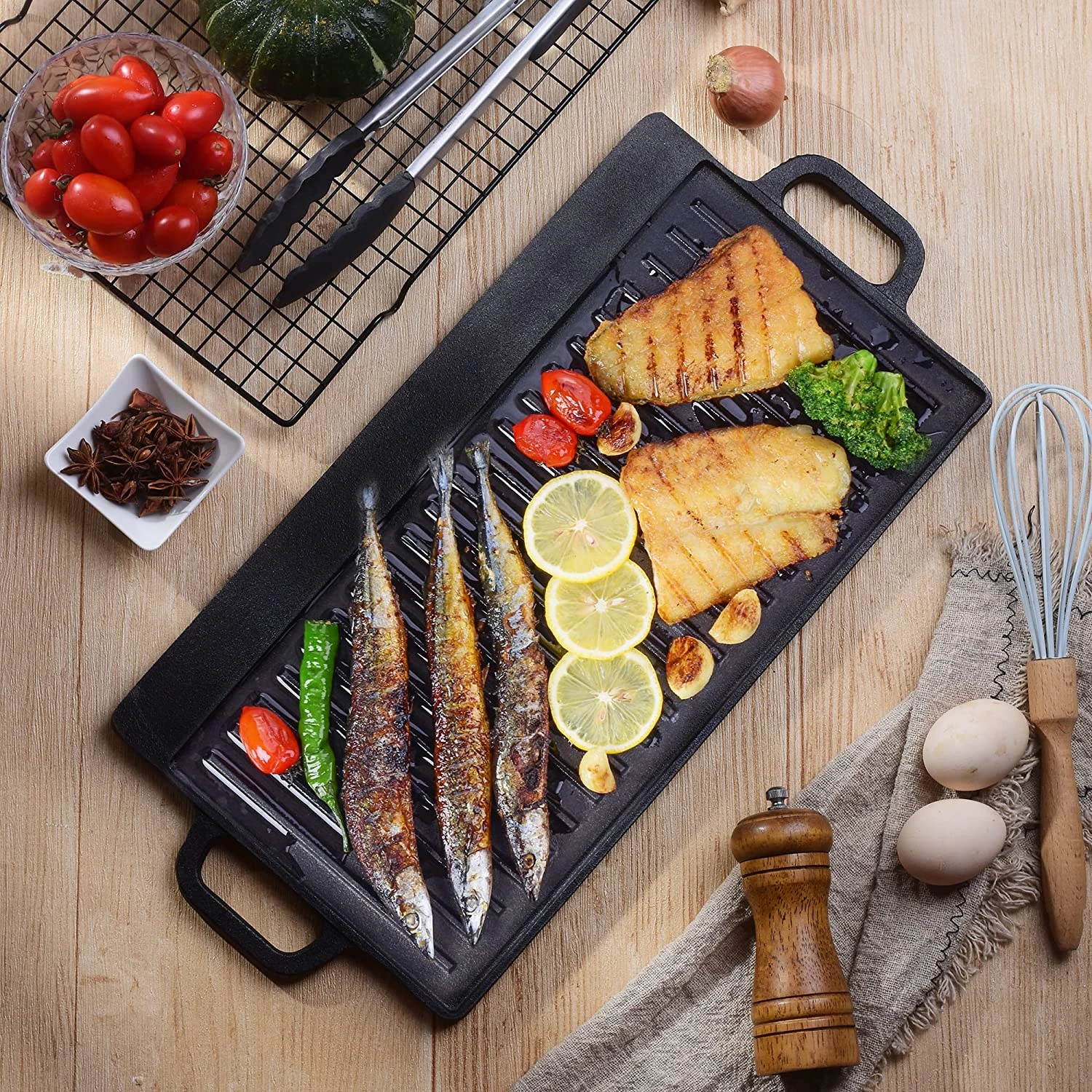
how to choose a cast iron skillet
How to Choose a Cast Iron Skillet
When it comes to versatile cookware, few options can match the durability and performance of a cast iron skillet. From frying to baking, these sturdy pans can handle a variety of cooking techniques. However, selecting the right cast iron skillet can be daunting for newcomers. This guide will walk you through the key factors to consider when making your choice.
1. Size Matters
One of the first decisions you’ll need to make is the size of your skillet. Cast iron skillets typically range from 6 inches to 15 inches in diameter. For most home cooks, a 10-inch or 12-inch skillet is an excellent middle ground, suitable for everything from searing meats to sautéing vegetables. If you frequently cook for a larger family or host gatherings, consider a bigger skillet. Conversely, if you're cooking for one or two people, a smaller skillet will suffice.
2. Weight and Heaviness
Cast iron skillets are known for their weight. A heavier skillet generally retains heat better and distributes it evenly. However, if you have limited strength or find yourself struggling with heavy cookware, you might want to consider the weight of the skillet. Test a few in-store if possible; the right weight should feel comfortable for you to lift and maneuver.
3. Pre-Seasoned vs. Unseasoned
When shopping for cast iron skillets, you’ll come across both pre-seasoned and unseasoned options. Pre-seasoned skillets come with a layer of oil baked onto the surface, making them ready to use right away. These are convenient for beginners. On the other hand, unseasoned skillets require a bit of work as you must season them yourself before first use. While it can be a fulfilling process, it may not be ideal for those who want instant gratification.
how to choose a cast iron skillet

The construction quality of the skillet is crucial for its longevity and performance. Look for skillets made from 100% cast iron without any added materials, as some cheaper skillets may be made from inferior alloys. A good cast iron skillet will be heavy and feel solid all around, with no signs of warping or deformities. Brands with a solid reputation for quality, like Lodge or Le Creuset, offer reliable options backed by years of expertise.
5. Handle Design
The handle is an often-overlooked aspect of cast iron skillets, but it can significantly affect usability. Some skillets have a long handle that provides a secure grip, while others may have a helper handle for easier handling when maneuvering heavy dishes. Ensure the handle is comfortable to grasp and not too short to lift the skillet effortlessly, even when it’s full of food.
6. Price and Brand
Cast iron skillets vary widely in price. While you can find budget options, investing a bit more can pay off in quality and longevity. Established brands often provide better warranty and customer service. Your investment should align with how frequently you plan to use the skillet and whether you see it becoming a staple in your kitchen.
7. Maintenance and Care
Finally, consider how much effort you’re willing to put into maintaining your skillet. Cast iron requires special care, including seasoning and regular maintenance to prevent rust. If you don’t mind the upkeep, you’ll enjoy the benefits of a beautifully seasoned skillet that improves over time.
In conclusion, choosing the right cast iron skillet is all about balancing size, weight, quality, and personal preferences. By keeping these factors in mind, you can find a skillet that will not only meet your cooking needs but also last for generations. Happy cooking!
-
Season Cast Iron Perfectly with GPT-4 Turbo TipsNewsAug.01,2025
-
High Quality Cast Iron Cookware - Baixiang County Zhongda MachineryNewsAug.01,2025
-
Premium Cast Iron Pan: Durable & Perfect HeatNewsAug.01,2025
-
High Quality Kitchen Durable Black Round Cast Iron Cookware Pancake Crepe Pan-Baixiang County Zhongda Machinery Manufacturing Co., Ltd.NewsAug.01,2025
-
Cast Iron Cookware - Baixiang County Zhongda Machinery | Nonstick, Heat ResistanceNewsAug.01,2025
-
High Quality Kitchen Durable Black Round Cast Iron Cookware - Baixiang County Zhongda Machinery | Non-Stick, Heat Retention, DurableNewsJul.31,2025


